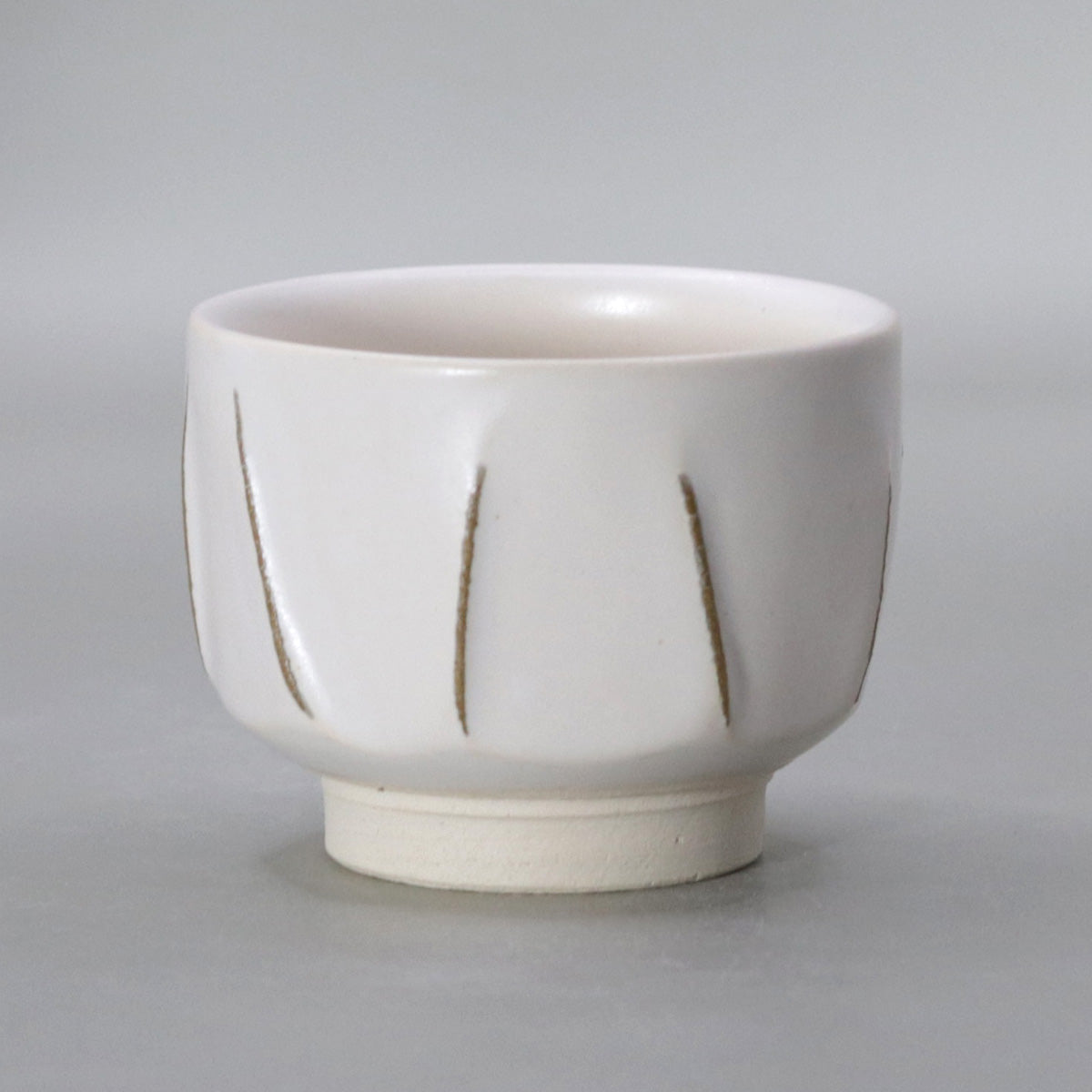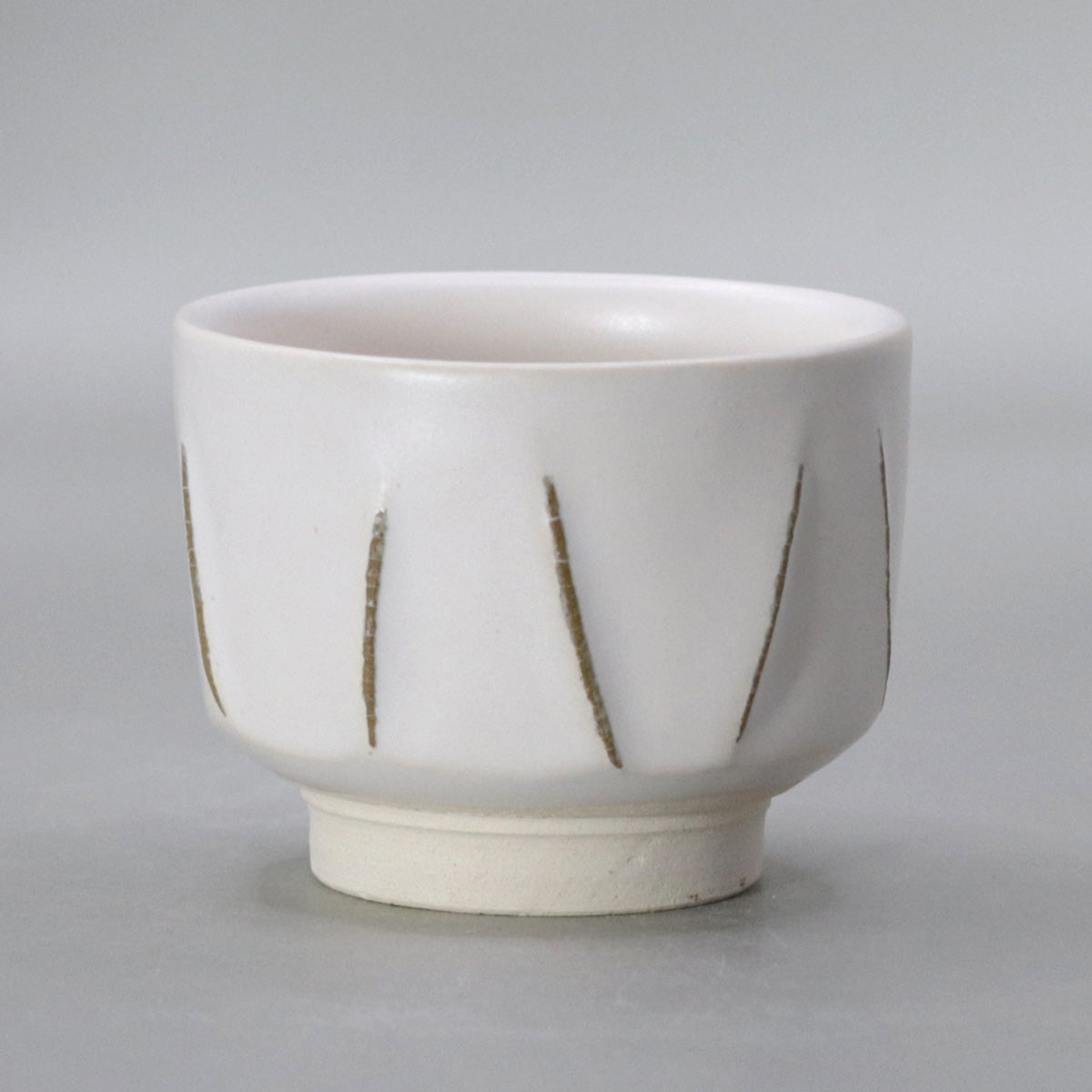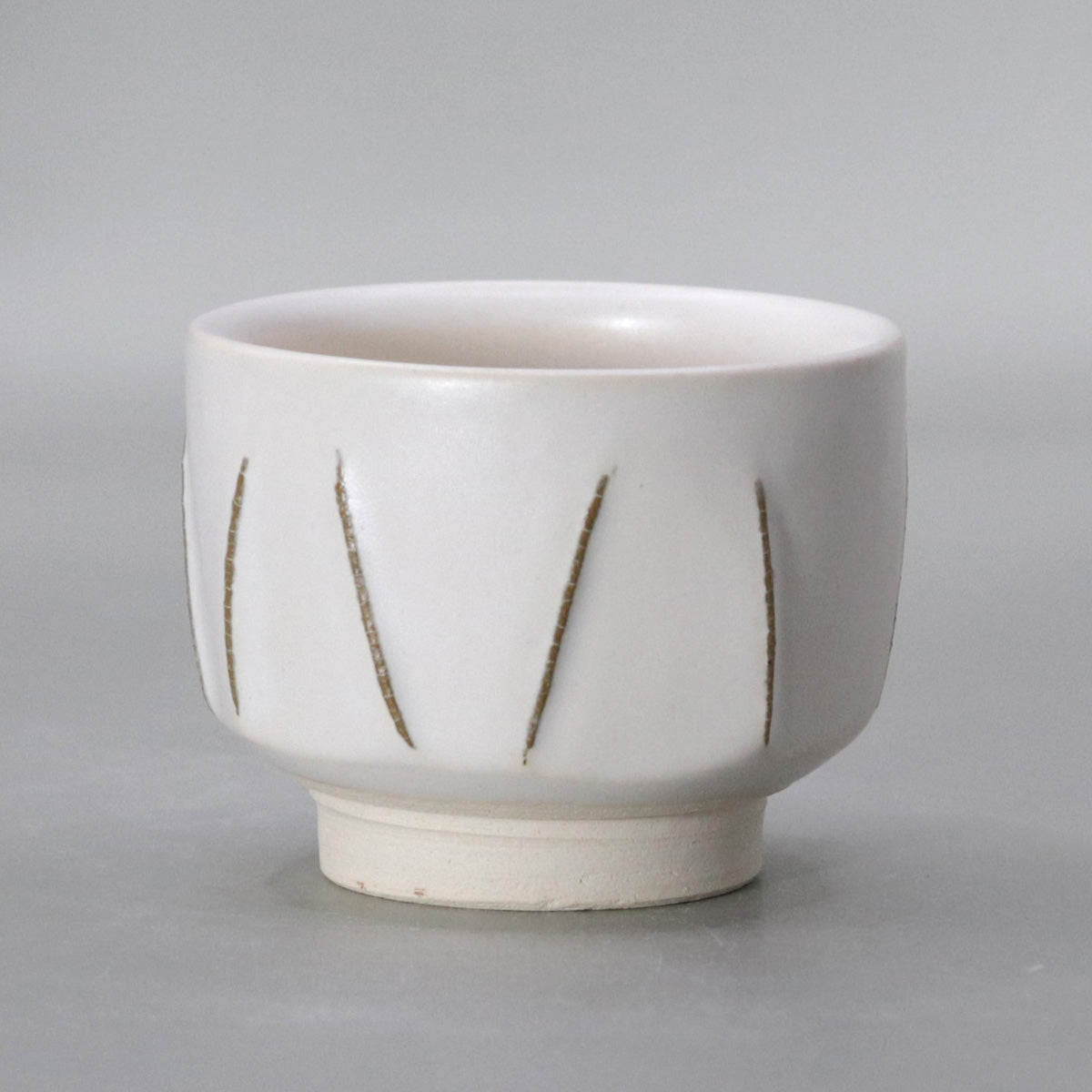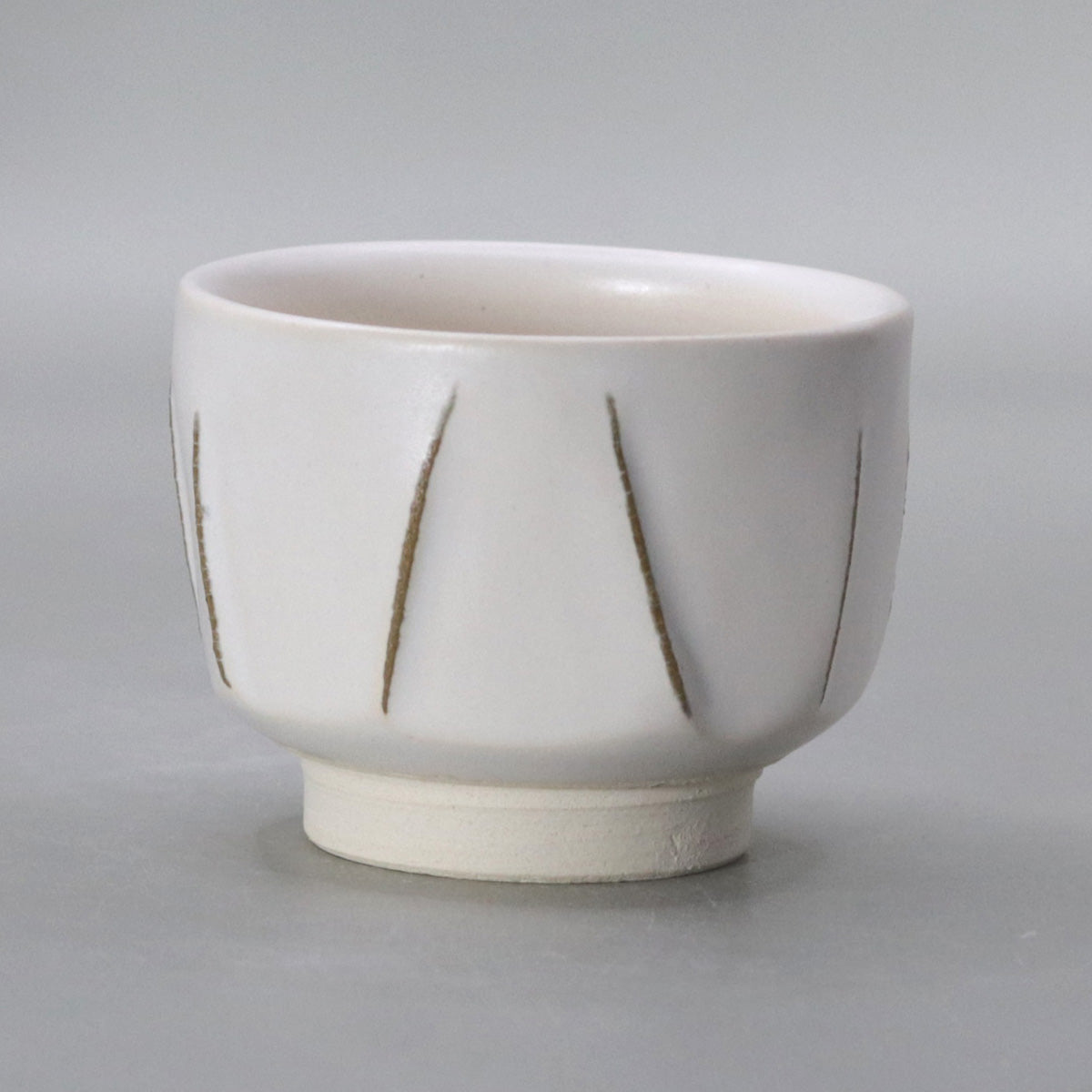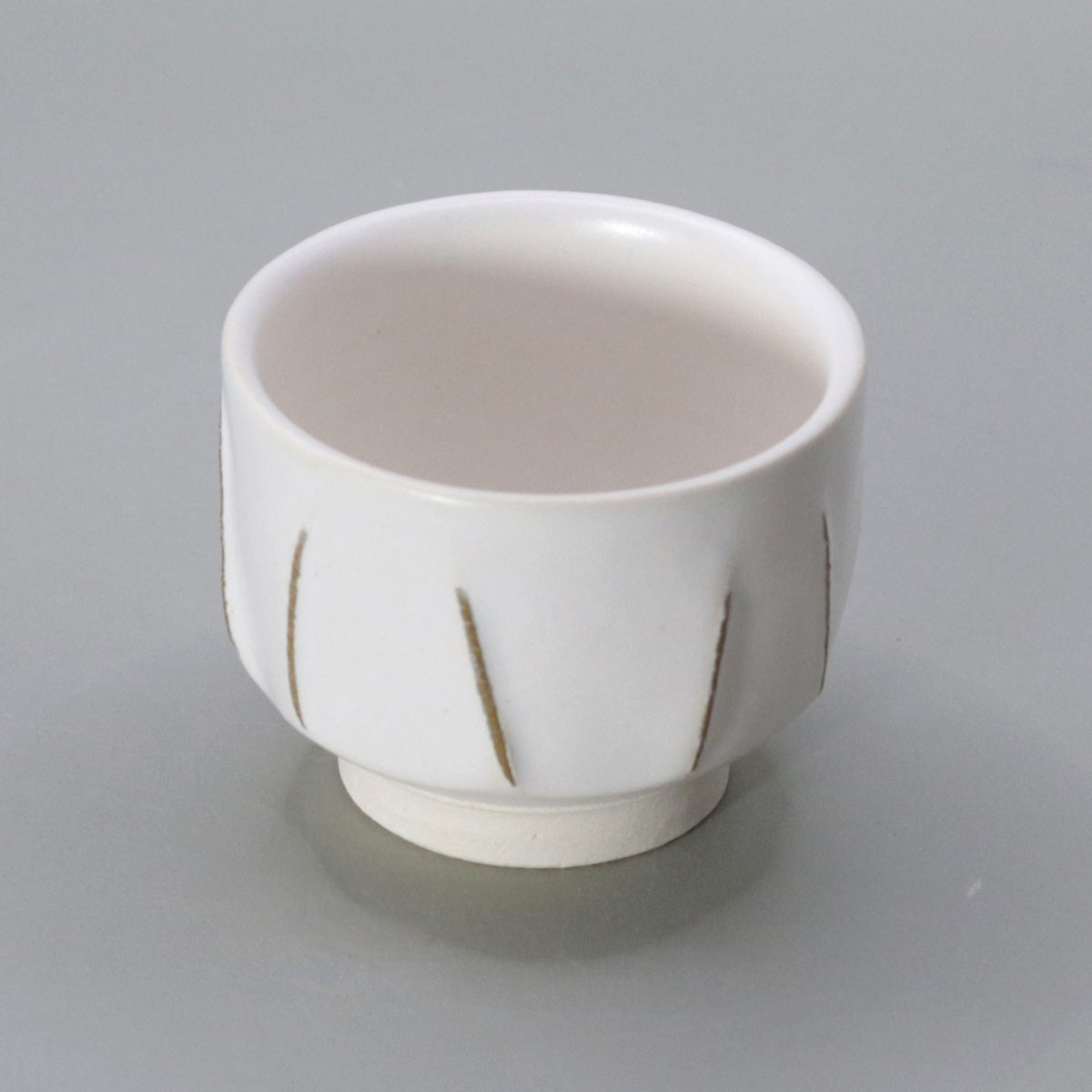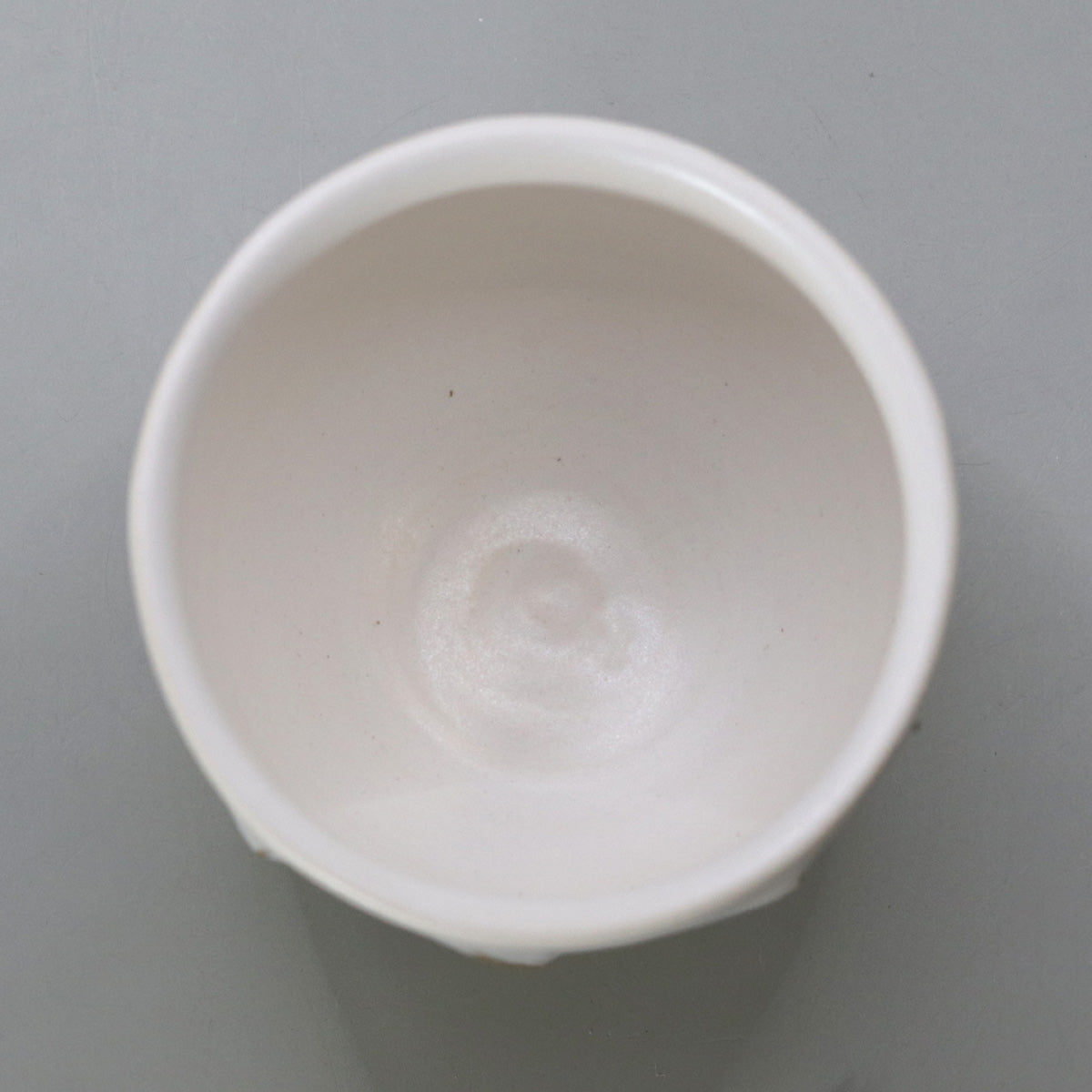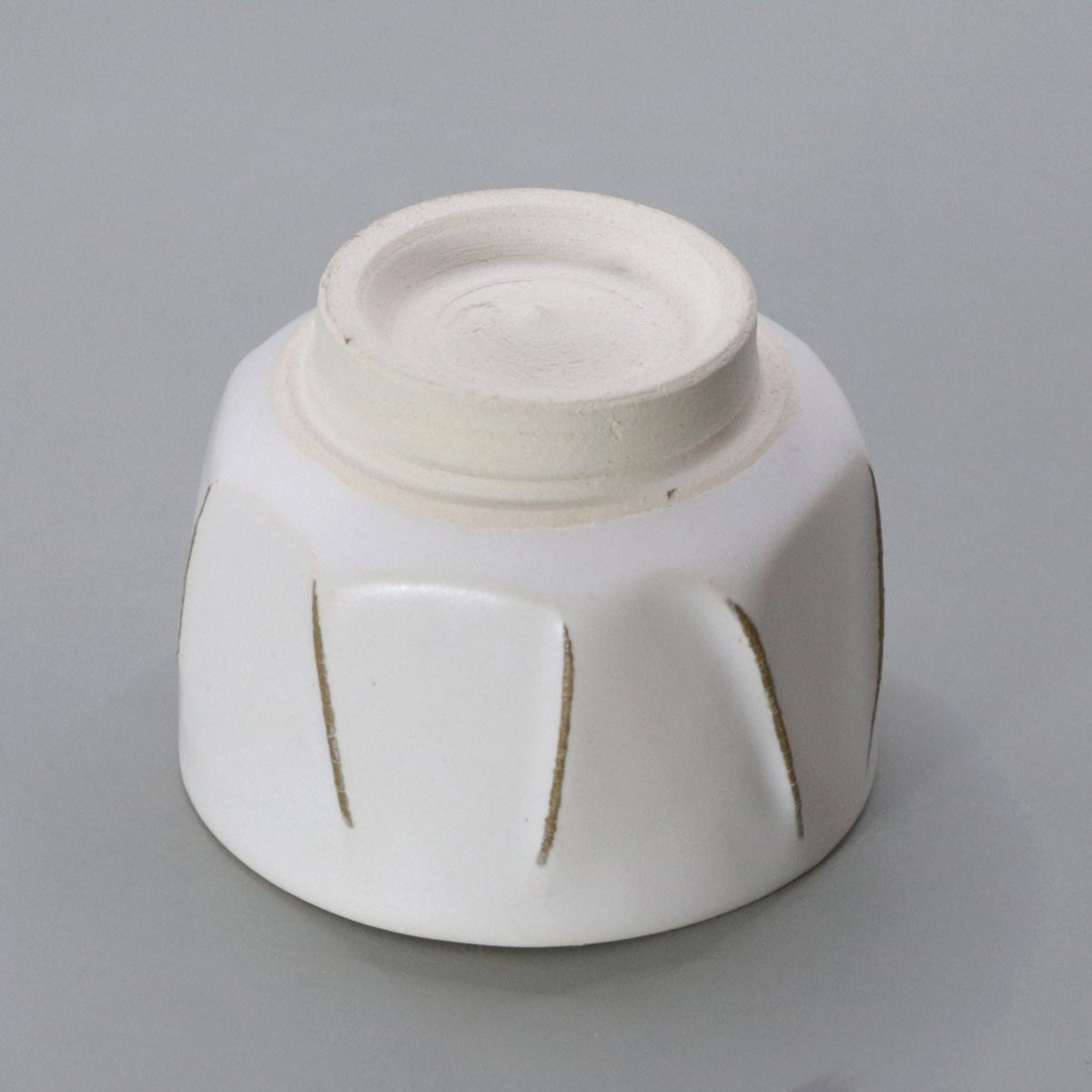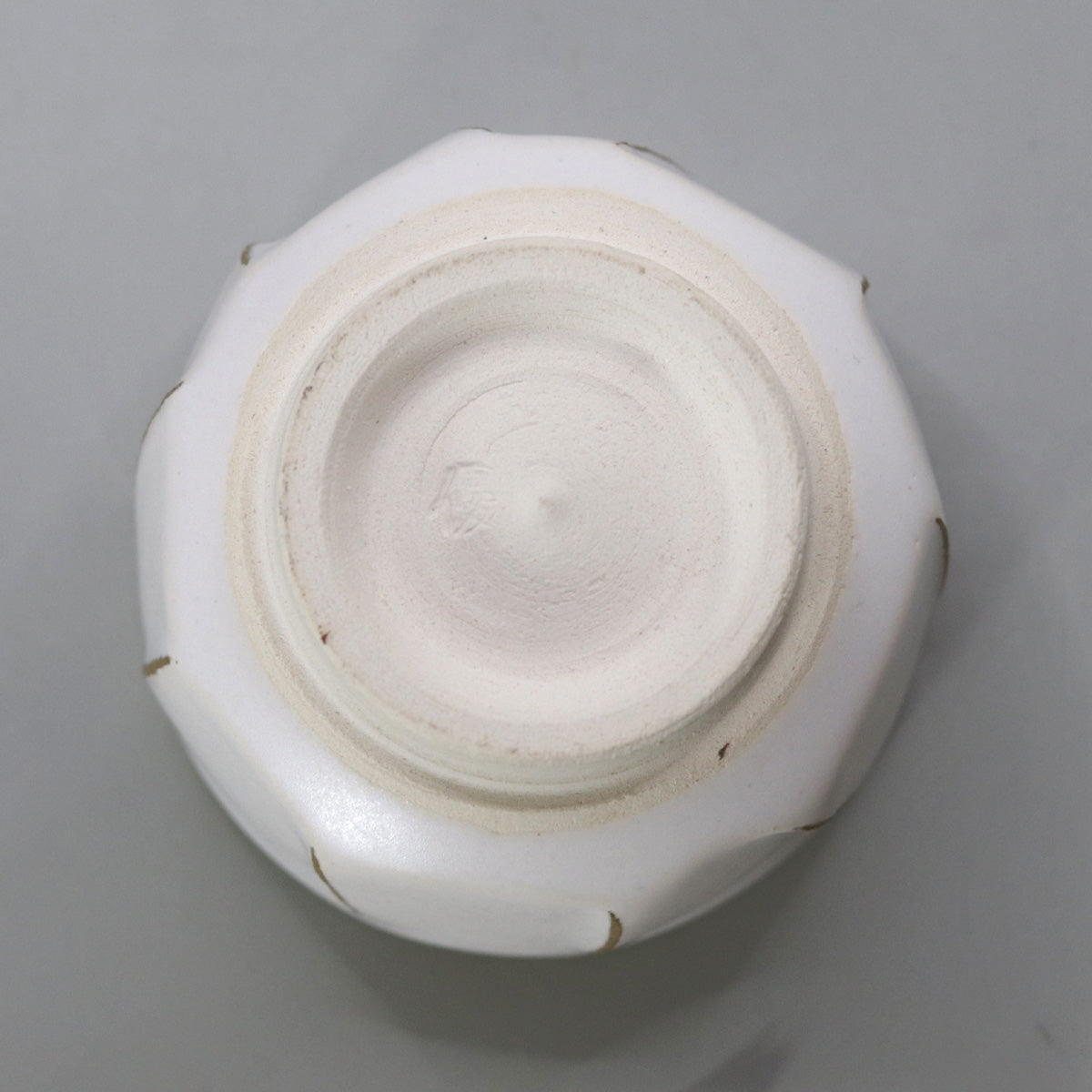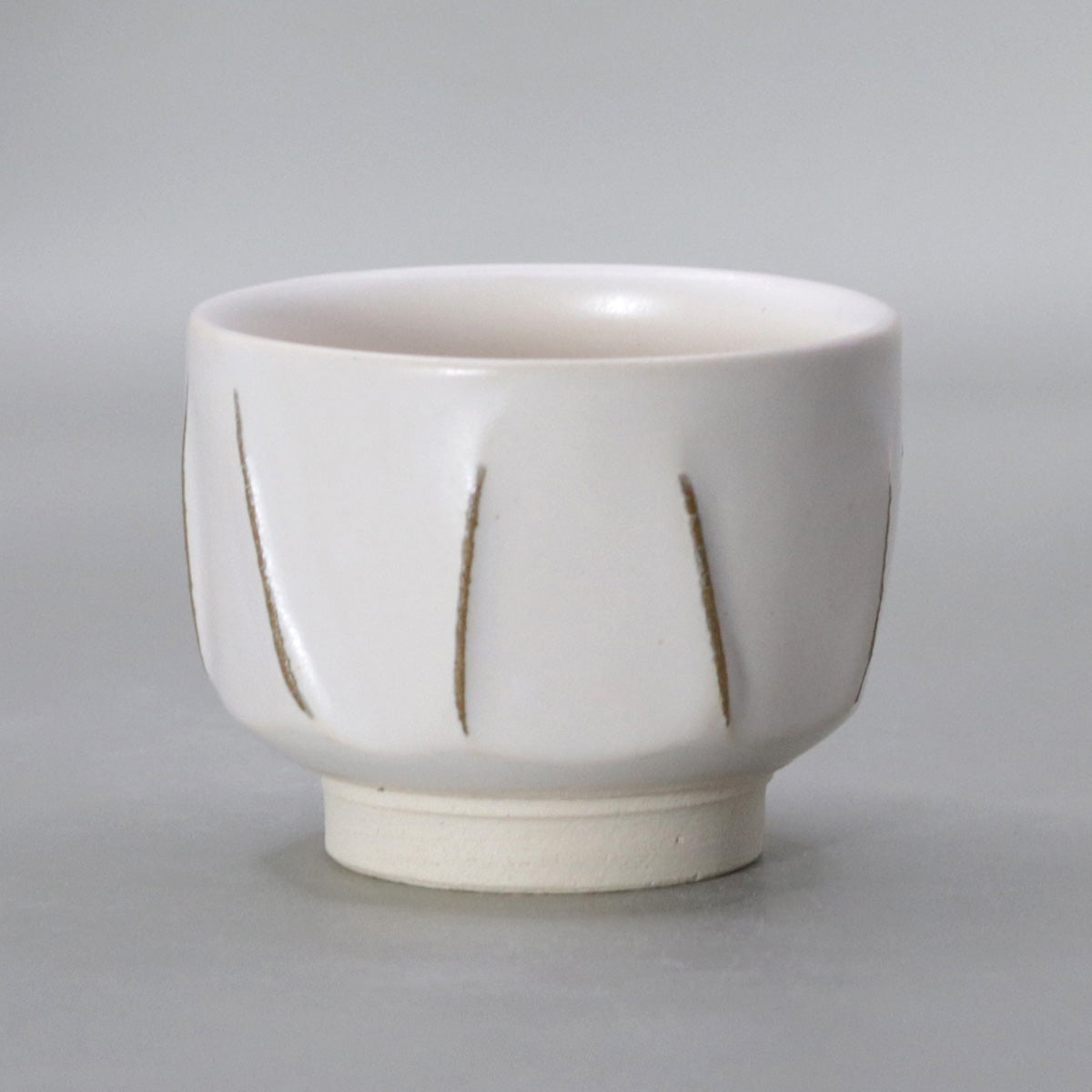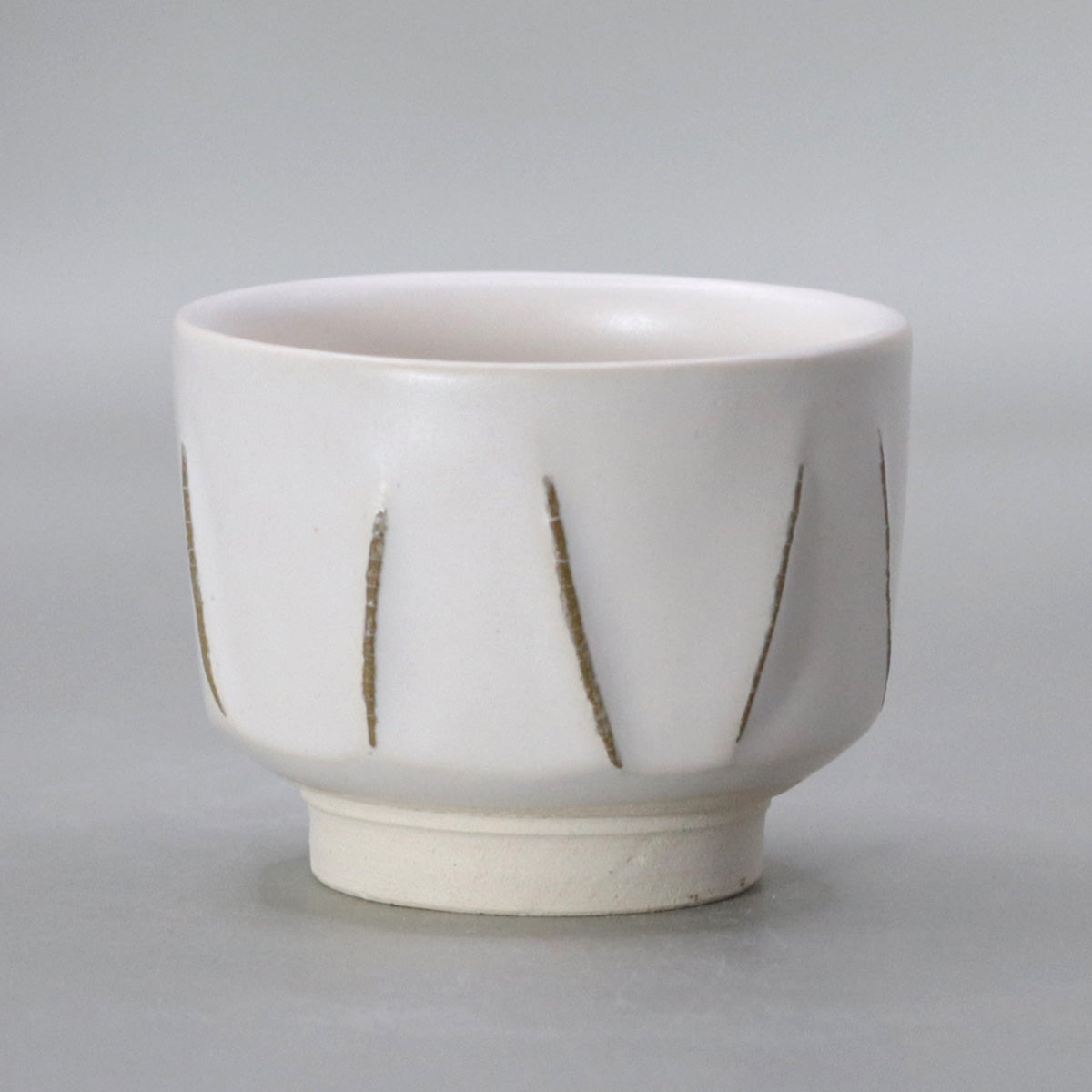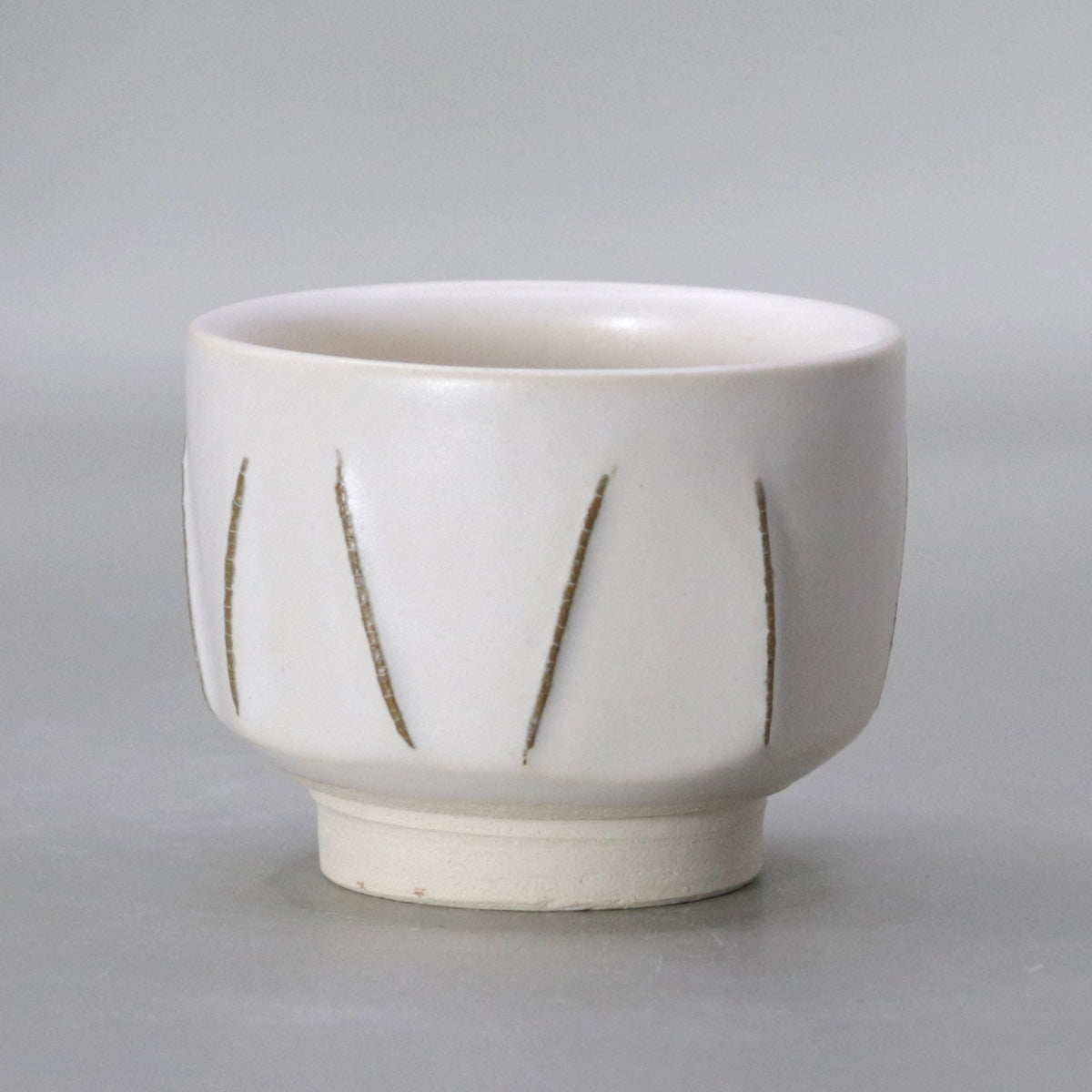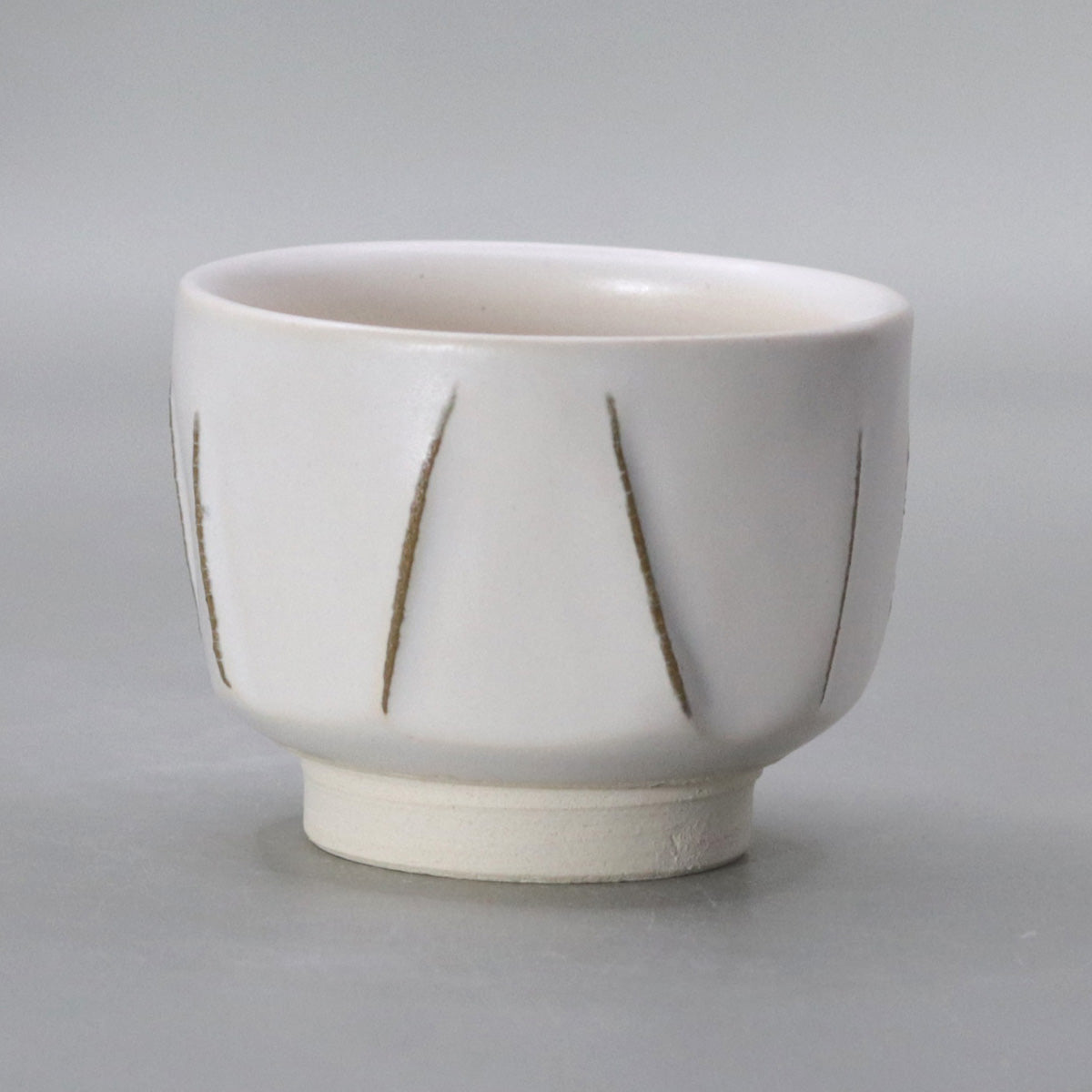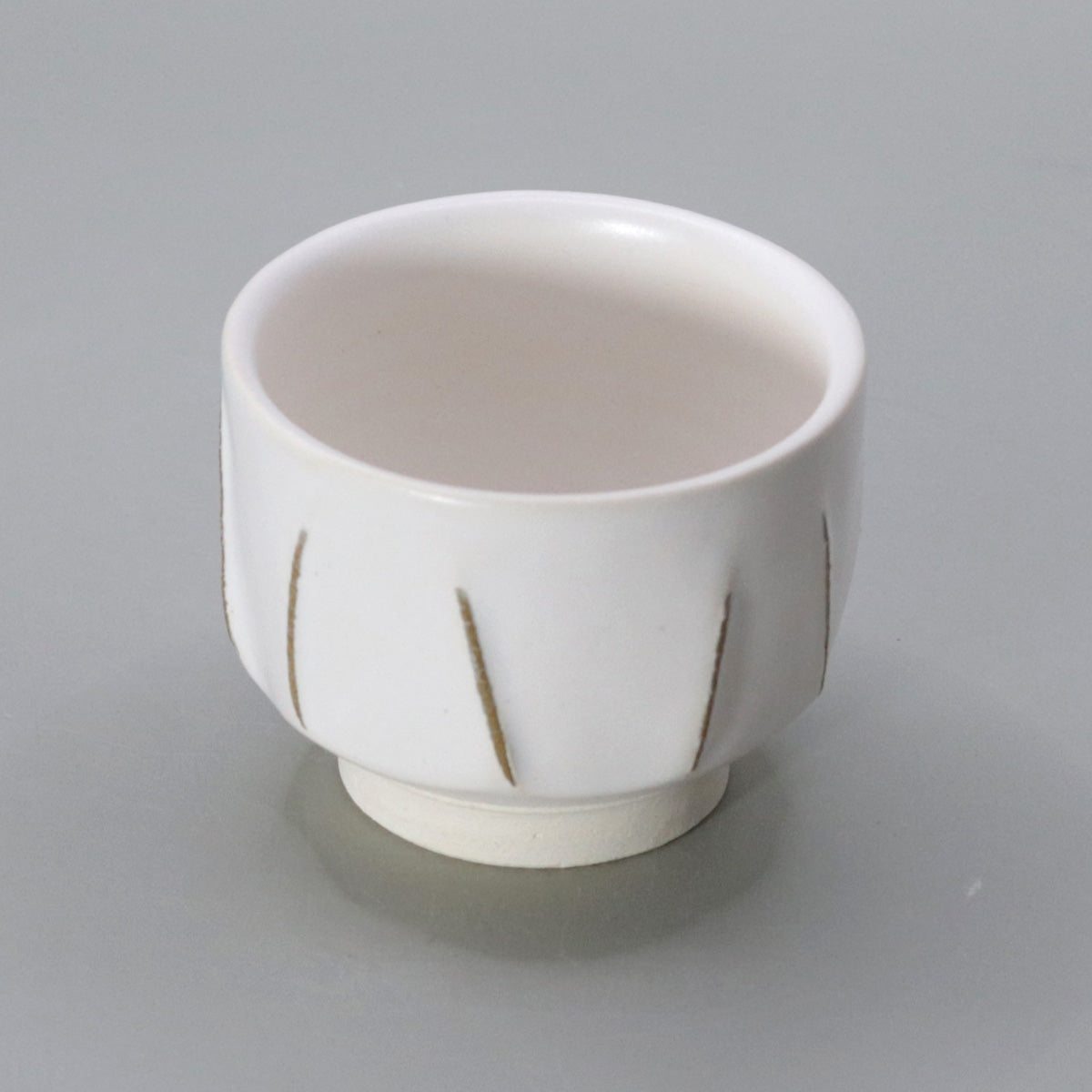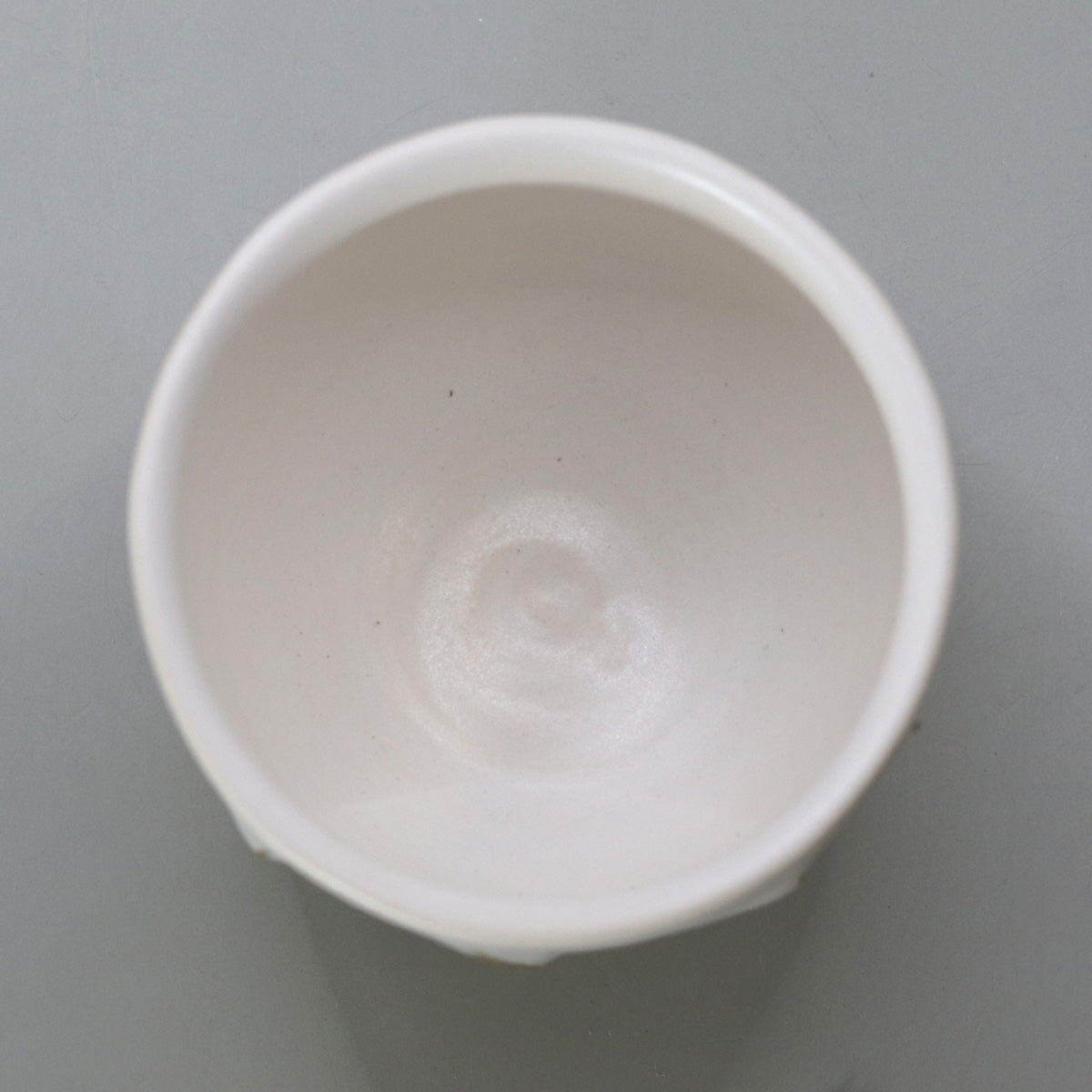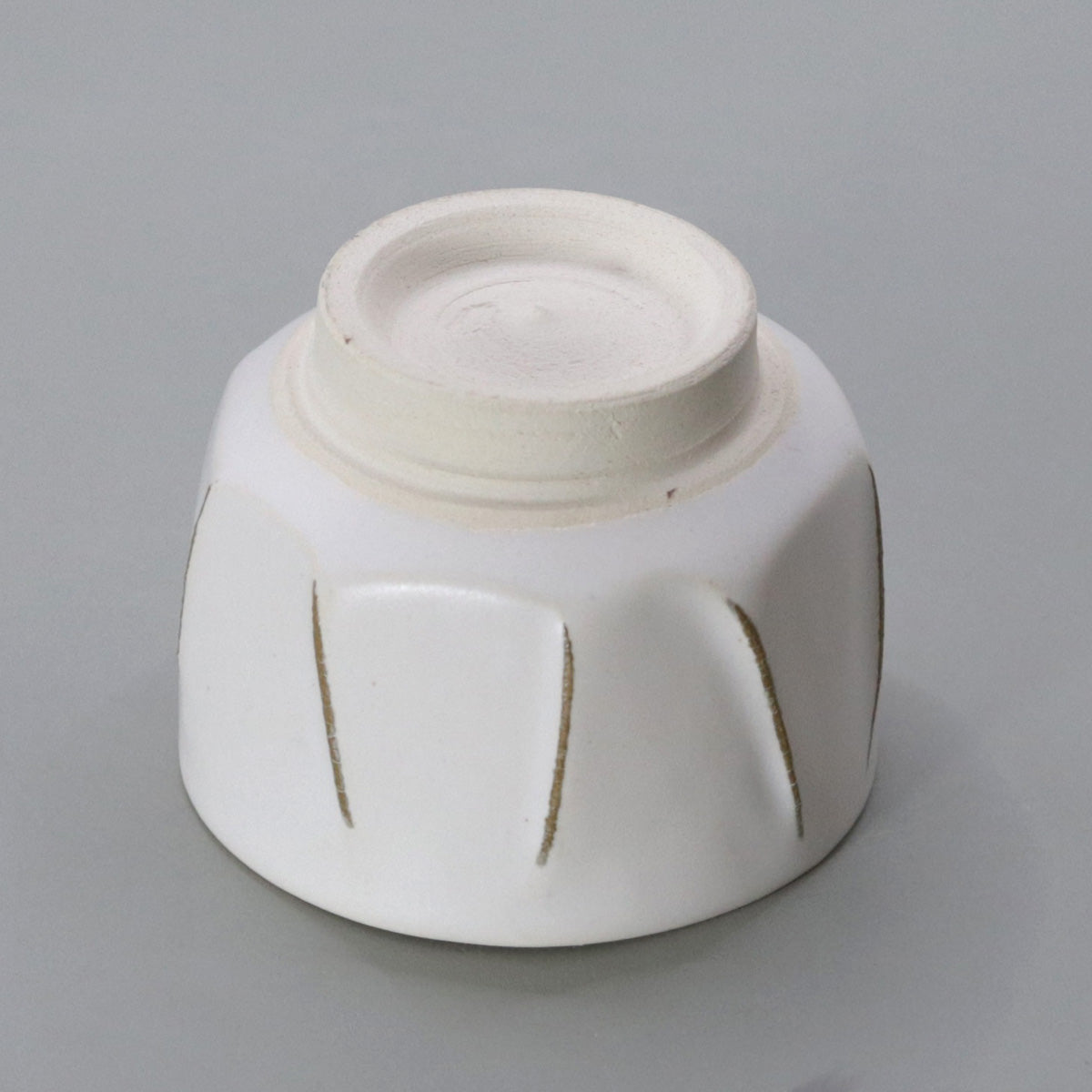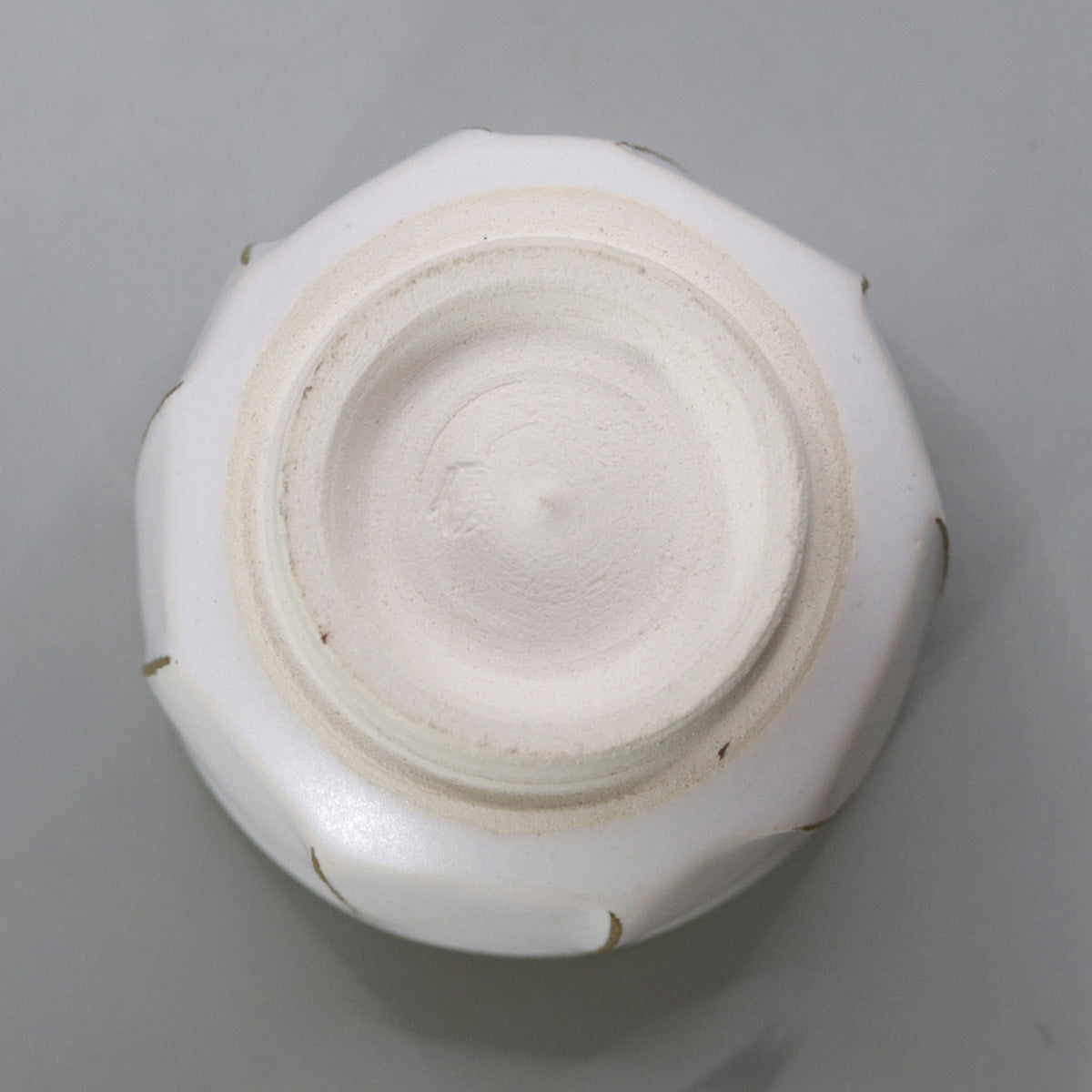White glaze ridgeline sake cup
-- Created by Masaru Okada --
Work summary
This white-glazed sake cup was made by Okada Masaru, who has a kiln in Uji-tanzan, Kyoto. The side of the neat, nearly cylindrical vessel has vertical ridges (carved lines) at equal intervals, giving rhythmic shadows to the tranquil white porcelain surface. The form combines elegance and simplicity, and is an ambitious work that sublimates the aesthetic sense of "space" cultivated in tea pottery into a sake vessel.
Glaze and technique
White glaze composition : Made mainly from feldspar and silica with a small amount of titanium oxide added, creating a slightly warm off-white color.
Creating carved ridges : A thin layer of glaze is applied to the carved lines, allowing the raw color of the base material to show through slightly, creating a subtle gradation on the white porcelain surface.
Firing : Towards the end of the process, the furnace is saturated with oxygen to highlight the purity of the white glaze and create a clear contrast with the earthenware.
Historical and cultural background
White-glazed and white-porcelain sake vessels have their origins in the blue-and-white porcelain of Jingdezhen, China, and white porcelain cups of the Joseon Dynasty, and were accepted in the Edo period as tools symbolizing tranquility at tea ceremonies. The technique of adding ridges and carvings to the sides is a decorative technique also seen in Joseon Kohiki and Hagi ware, and is a Japanese arrangement that brings out the rustic earthiness while also creating expressions of light and shadow. Okada Masaru has fused this traditional technique with modern minimalism, attempting new expressions that carve rhythm into the white space.
Aesthetic intent and spirituality
The tense straight ridges suggest the "gradual passage of time," while the white glaze's blank spaces symbolize the "infinite space." When sake is poured, the lines are reflected on the surface of the liquid, and as you drink, the shadow wavers and disappears - each and every moment allows you to experience the "once in a lifetime" experience.
How to use and points to note
Suitable for chilled and room temperature sake : The cylindrical shape traps the aroma just right, bringing out the delicate aroma of ginjo sake.
Changing light source : Natural light creates soft shadows, while spotlights highlight the ridges sharply, creating a sculptural appearance on the white porcelain surface.
Versatile : Can also be used as a container for delicacies or small dessert cups, adding a clean and rhythmic touch to your dining table.
Sharp ridges carve a rhythm into the quiet white world - this sake cup embodies the "tension of space" and "refined simplicity" that Masaru Okada pursues. Hold it in your palm and enjoy the dance of shadows created by the sake and light, and spend a quiet and blissful moment.

